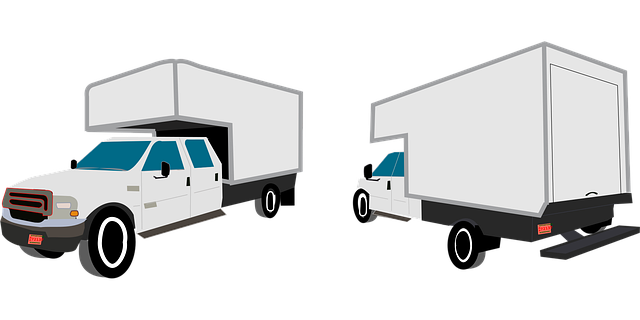Looking to register your car in California? This comprehensive guide walks you through the process, ensuring a smooth transition. From understanding essential requirements to gathering all necessary documents, this article is your go-to reference. Learn how to efficiently navigate the DMV, verify vehicle identity using a VIN checker, and pay registration fees. By following these steps, registering your car in California becomes a hassle-free task.
- Understand California Car Registration Requirements
- Gather Necessary Documents for Car Registration
- Visit the DMV: Step-by-Step Registration Process
- Verify Vehicle Identity with VIN (DMV Check)
- Pay Registration Fees and Obtain Your Plate
Understand California Car Registration Requirements

Before registering your car in California, it’s crucial to understand the state’s specific requirements and processes. The California Department of Motor Vehicles (DMV) ensures that all vehicles on the road meet safety standards and are properly insured. One key aspect is verifying the vehicle identification number (VIN). This unique 17-character code, often found on a plate in the car’s window or under the hood, helps identify your vehicle for registration purposes.
Using a DMV VIN verifier or conducting a mobile vin inspection allows you to confirm the vehicle’s history, including its previous owners and any reported accidents or damages. This process is essential to prevent fraud and ensure that only legitimate, safe vehicles are registered. Properly completing these steps will facilitate a smoother car registration experience in California.
Gather Necessary Documents for Car Registration

Before heading to the California Department of Motor Vehicles (DMV), ensure you have all the required documents for a smooth car registration process. The first step is to obtain a Vehicle Identification Number (VIN) verification, which can be done through a trusted dmv vin verifier or mobile VIN verification service. This step is crucial as it confirms your vehicle’s authenticity and history, ensuring compliance with state regulations.
Gathering the necessary documents includes presenting valid identification, such as a driver’s license or passport, proof of insurance, and the title or lease agreement for the vehicle. Additionally, you might need to provide a completed registration application form and, in some cases, pass a safety inspection. Always check the DMV’s official website for the most up-to-date requirements before visiting any of their offices.
Visit the DMV: Step-by-Step Registration Process

Visiting the DMV is a crucial step in registering your car in California. Here’s a step-by-step guide to make the process smoother. First, gather all necessary documents, including your driver’s license, proof of insurance, vehicle registration from the previous state (if applicable), and the title or purchase agreement for your new vehicle. Then, head to your nearest California DMV office.
At the DMV, you’ll need to complete an Application for Title and Registration (Form DMV-123). Here, you’ll provide information about your vehicle, including its make, model, year, and unique Vehicle Identification Number (VIN). For added convenience and accuracy, consider using a mobile VIN verifier to ensure your VIN is legitimate before proceeding. After submitting the form and required documents, an DMV agent will process your application. This typically involves verifying your information, conducting a VIN inspection, and processing any fees associated with registration. Once approved, you’ll leave the office with your new California vehicle registration and plates.
Verify Vehicle Identity with VIN (DMV Check)

Before you can register your car in California, it’s crucial to ensure that the vehicle is legitimate and has a valid identity. One of the essential steps in this process is the DMV vin verifier, which checks the Vehicle Identification Number (VIN). This verification ensures that the car’s make, model, year, and other critical details match the information provided by the manufacturer. It also helps to prevent fraud and ensures you’re purchasing or owning a genuine vehicle.
A mobile vin inspection or mobile vin verifier can be particularly useful in this context as it allows for convenient and efficient verification. Many services offer this on-demand, enabling you to confirm your car’s identity from the comfort of your home or even before finalizing the purchase. This added layer of scrutiny is beneficial in California, where the DMV strictly enforces vehicle registration regulations.
Pay Registration Fees and Obtain Your Plate

After completing your vehicle’s registration application at the California DMV, it’s time to settle the fees. The cost of registering a car in California varies based on several factors like the type of vehicle and its age. You’ll need to pay for the base registration fee plus any applicable emissions fees or other surcharges. It’s crucial to ensure you’re using an accepted form of payment, which typically includes cash, check, debit card, or credit card. Once your payment is processed, you’ll receive a Vehicle Registration and Certificate of Title.
Before you can drive your newly registered car off the lot, you need to obtain your license plate. The DMV will issue plates based on the information provided during registration, including your vehicle’s make, model, and year. In some cases, especially for new vehicles or those with unique characteristics, a mobile vin inspection or vin verification might be required. This process ensures that your car matches the details on record at the DMV, ensuring accurate and safe registration.
Registering a car in California is a straightforward process, ensuring your vehicle is road-ready. By understanding the requirements, gathering essential documents, and completing the DMV registration steps, including verifying the Vehicle Identification Number (VIN) using a trusted dmv vin verifier, you’ll have your car registered promptly. Remember to pay the necessary fees and obtain your custom plates to legally drive on California’s roads.
